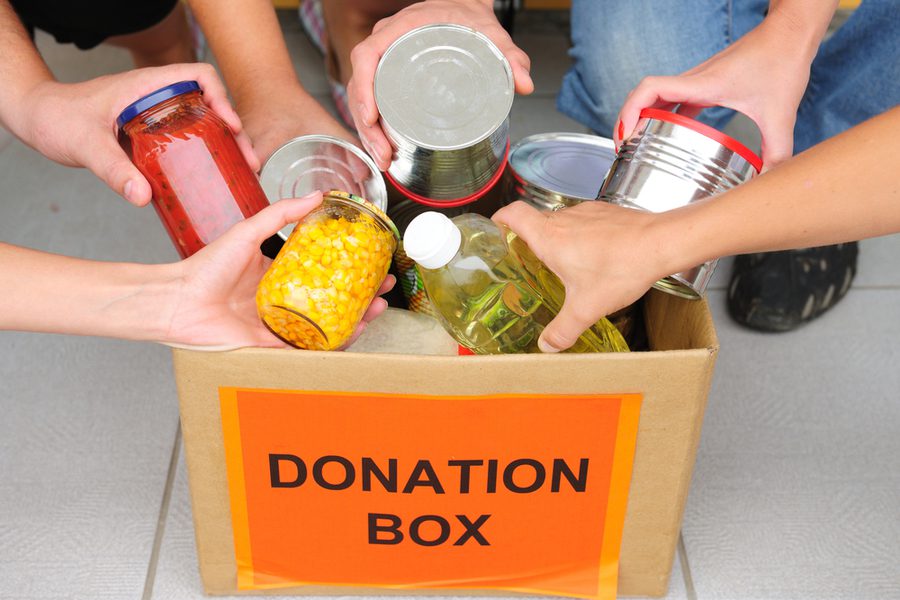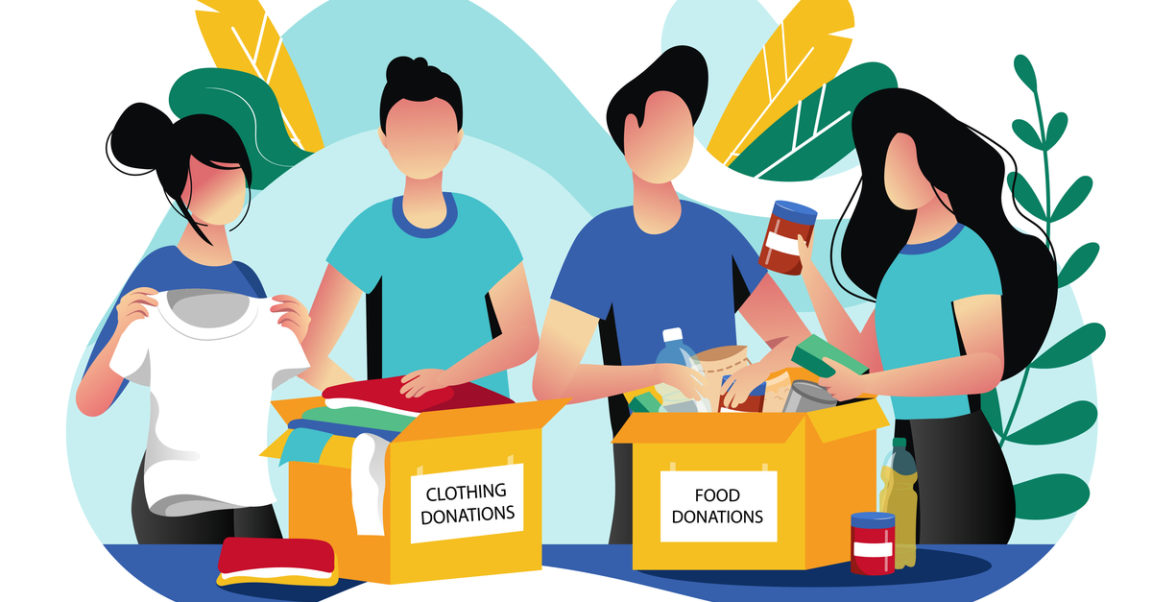Skepticism
The first Tuesday in December is Giving Tuesday, however, I am and have always been a charity skeptic, from charities with high overheads, to awareness campaigns for things we are all aware of.
A Charity Collection Box In Every Home
Growing up in a Jewish household in Australia, my family had something called the “blue box”, a collection box for a tree-planting charity called the Jewish National Fund (JNF). Every Jewish household had one, and every few months, and elderly volunteer would knock on our door to collect our “tzedakah” (donations). Inevitably, we’d shake the tin can, realise we had failed to collect loose change, and more motivated by embarrassment than to do a “mitzvah” (good deed), one of my parents would fish a low denomination note out of their pocket to give to little old Mrs. Gold-zersh-lich-blat-owitz-stein-berg. The campaign wasn’t just limited to small donations – it was common for party invitations to ask for donations to this charity in their name, and yes, you’d be issued with a certificate to give to the host as proof. And of course, the big money makers are large individual donations and donations in wills.
As a member of a minority, there was a select pool of charities inside the community you went to when it came time to give. JNF is far from perfect, but I was taught not to think, and not to question.
All the more reason to.
The Weirdest Charity Drive

By far the most obvious stupid drive I encountered was the time a friend was collecting opened tubs of Vaseline to donate to an Indonesian child with a skin condition. People would then drop collections off at a location in the city, and occasionally someone flying to Bali for a holiday would pack the lot on their checked luggage and drop it off at a restaurant in Bali, where the parents could pick it up. It would have been far better to buy cheap, bulk, generic brand, new petroleum jelly in Indonesia rather than have such a large number of people waste their time and energy. Food drives, door knockers and charity runs, while (usually) not as bad, face similar inefficiencies, yet remain popular.
Door-to-door and Street Solicitations

Starting easy, let’s look at charity collectors in person. Unless they’re a volunteer (and young charity collectors rarely are), it’s pretty obvious their salary gets taken out of your donation. The worst pay 70% to more than 90% of what they collect to solicitors. Donate directly, and to a charity that have lower overheads (see bottom of this article.)
Food drives suck in particular

Whether you’re clearing out your own food pantry or buying food especially at your supermarket, it’s somewhat wasteful. Don’t take my word for it. Whether you prefer to watch a 2 minute Adam Ruins Everything clip, listen to NPR or read a Vancouver Sun article aptly titled For the love of God, stop donating canned goods to food drives, know that:
- The $1 you spent on an item retail could buy exponentially more wholesale. You’re much better off donating cash to a food bank.
- People tend to either donate things they bought and didn’t use which in turn will be low demand, and may get thrown out upon expiry.
- Just like aspirational recycling, half of the donated food items are discarded, largely because they’re expired, or expire before anyone wants them.
- People inaccurately predict what food banks desperately need – like cereal and certain toiletries. If you want to donate goods, do a tiny amount of research.
- It’s a logistical nightmare, costing money to haul, sort, and warehouse these items.
Have undesirable or expired food? I list my unwanted and even expired food on my local Facebook Buy Nothing group. Even (recently) expired food gets snatched up straight from my doorstep, AND I get a huge dopamine boost because I know a little about the person taking it. My food waste has plummeted.
Charity Runs, Walks, and Cycles, Oh My….

A 2003 study at Indiana University School of Philanthropy concluded that races and other special events are according to associate dean Patrick Rooney “the least efficient method of raising money when you look at dollars raised vs. dollars spent”. They gather just $3.20 per $1 dollar spent, vs $12 from telemarketing, and $20 for traditional larger campaigns. Furthermore, “-athons” have proliferated so much they have passed their saturation point, with per-participant donations dropping. (As a marketer, I’d call this “cannibalization”.)
Market Watch have a cost breakdown, along with an excellent history of the walkathon, and plenty of more data.
In response, NonProfit Quarterly rightfully asked good questions about the positive PR corporations get from their employees volunteering. “Whose interests get better served here, the charities’ or the corporations’?” Furthermore, those paid for promotion and logistics can make millions. “Is there anything wrong with people making oodles of money from charities on these fundraisers?”
Fascinatingly, according to a series of studies by University College London psychology researcher Chris Olivola, a “martyrdom effect” spurs sponsors to donate more for longer events – when they believe an event will be painful for their friend. “There’s something about suffering that makes the event more special and meaningful,” he says.
Why Is Inefficient Fund Raising So Popular?
- Donating goods or organizing events feel It’s certainly a much greater dopamine hit than cold lucre.
- Donating goods or your time logically feels like it circumvents corruption.
- Peer pressure.
Embezzlement And Just Plain Inefficient
With new embezzlement scandals every year, and some charities’ fundraising mostly going to overheads (Charitywatch maintain a Hall of Shame), it’s no wonder the proportion of Britons donating directly to charity dropped to 57% in 2018 from 60% a year prior.
What To Do
Cash is still great if donated well. The Charity Commission for England and Wales issued a press release stating almost 1 in 3 considering donating to a charity for Christmas instead of giving a gift,
So do your research. Don’t confuse Kids Wish Network (97% overhead) with the Make a Wish Foundation. They are banking on your confusion, even designing their website to look and sound like the latter.
Check the charities at guidestar.org, charitynavigator.org, give.org, givewell.org or charitywatch.org.
Want to focus on outcomes, rather than low overheads? Coalition for Evidence-Based Policy or Focusing Philanthropy.
Be aware that not all reports are the same, as shown in this Chronicle of Philanthropy criticism of the methodology used by the New York Attorney General’s “Pennies for Charity” report.
Furthermore, donate your time and skills. You would not believe how much you can achieve in your community by volunteering than with cash. Most recently I participated in Skype a Scientist, which I can’t recommend highly enough.
Also, consider donating blood for transfusion or medical research. I have gay friends in Seattle who are not allowed to do the former but can do the latter here.
——————————-
Further reading:
- These are the charities where your money will do the most good | Vox
- I didn’t go into the waste that foreign aid sent to corrupt autocratic dictatorships, or their arguments about foreign aid making the plight of the masses worse. For more on this, I highly recommend Chapter 7: Foreign Aid in the book The Dictator’s Handbook: Why Bad Behavior is Almost Always Good Politics by Alastair Smith and Bruce Bueno de Mesquita.





